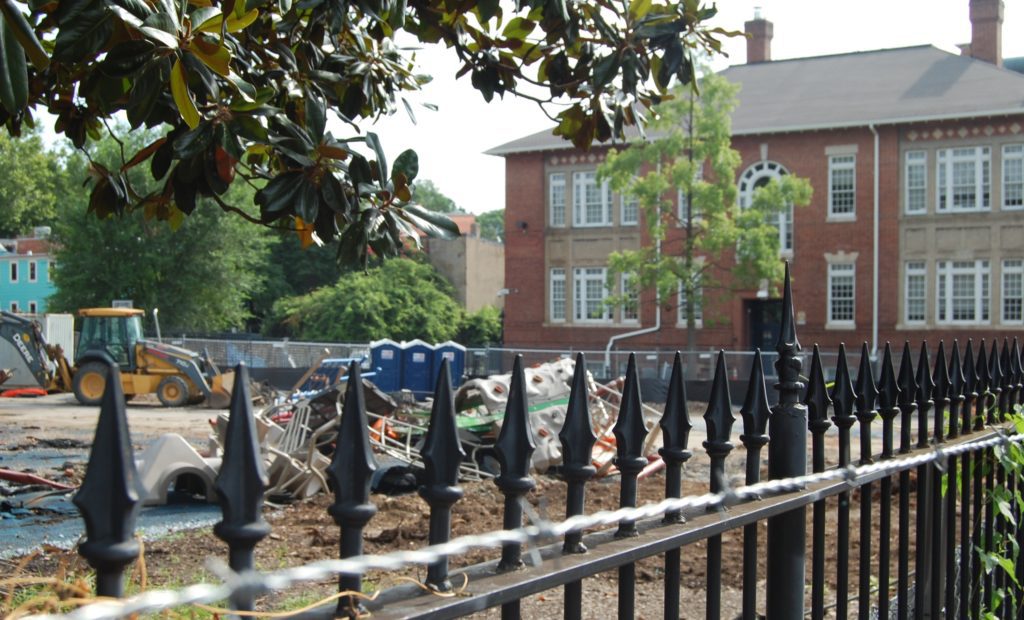Hyde-Addison School Construction Project Begins
By • July 24, 2017 0 497

It’s happening.
The long anticipated, much negotiated, somewhat dreaded reconstruction and expansion of Georgetown’s only public elementary school, Hyde-Addison, has begun. On Sunday, July 23, the school’s playground and all its equipment lay in a crushed heap waiting to be hauled away. Fencing surrounds the site, with entrances for construction vehicles and materials on both P and O Streets in front of the very busy St. John’s Church.
“Everyone concerned with this project wants it to go smoothly,” said Georgetown-Burleith Advisory Neighborhood Commission Chairman Joe Gibbons, who lives nearby. Lessons were learned from the just completed — and way over budget and schedule — Duke Ellington School of the Arts reconstruction project up the block. For years, the Ellington work had been a neighborhood nightmare, with agreements regarding parking, noise and the construction environment variously violated, ignored or dismissed.
To try to prevent that kind of experience for the Hyde-Addison neighbors, ANC member Rick Murphy put together a list of 13 points that encapsulated the major concerns, Gibbons reported. On Thursday, July 20, representatives of all the major stakeholders met in a “kind of closed to the press” meeting to go over the points. “None were disputed,” Gibbons said.
Attendees included Monica Dodge, coordinator of facility planning and design for DC Public Schools; Leslie Maysak, executive director of the Citizens Association of Georgetown; Hazel Denton, CAG transportation chair; commissioners Gibbons and Murphy; the construction supervisor and secondary supervisor from the contractors, MCN Build; and an official from D.C.’s Department of General Services.
Everyone agreed to a “three strikes and you’re out” policy regarding construction-worker parking. The car licenses of the 40 to 60 people expected to be involved at the construction site would be registered and available for monitoring. Equipment delivery would be timed to not obstruct public transportation and other services. Work could be done only between 7 a.m. and 7 p.m. on weekdays. Strict parameters were set and monitoring methods approved for measuring vibration, noise, pollution, pest control and lighting in and around the site.
Most important, everyone agreed to monitored intermediate time lines, weekly progress reports and immediate communication when incidents that could impact the site’s neighborhood occur.
“There is no reason to expect any surprises. We’ve tried to cover all the variables,” Gibbons said. “No one wants to involve the city departments of public works, health, environmental safety, police, etc. That is a waste of public resources and time when all of this can be handled among the neighbors, representative groups and construction supervisors through continual open communications, accountability and weekly reports.”

